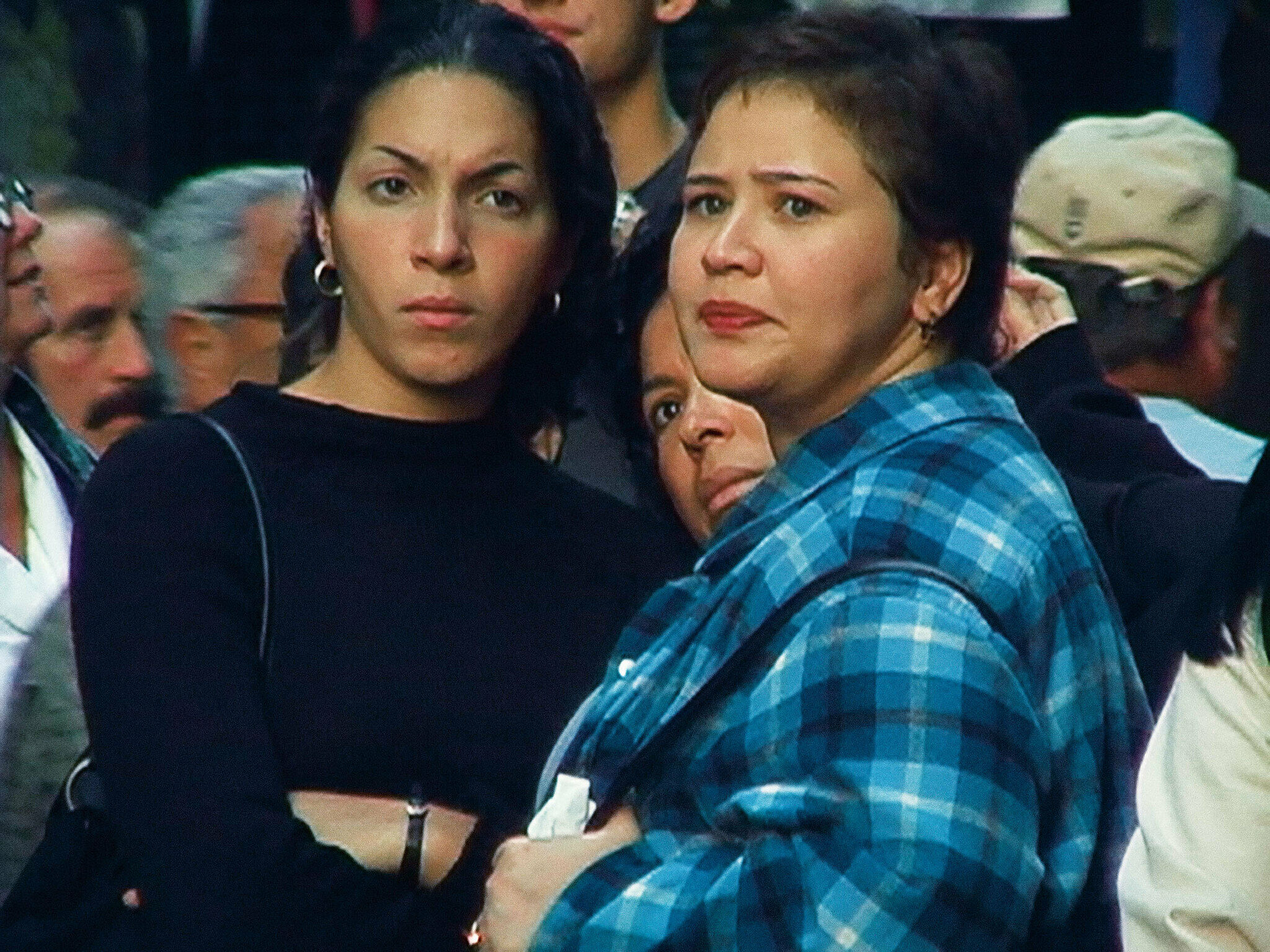O’ Say Can You See
View and discuss Laura Poitras's film
When you visit the exhibition, you and your students will see Poitras’s installation O’Say Can You See, 2001/2016, a double video projection on a two-sided screen. One side presents a short film depicting slow-motion shots of people gazing at the unseen remains of the World Trade Center in the days following the 9/11 attacks. Also titled O’Say Can You See, it was originally shown in 2011 and is the only aspect of works on view that was not made specifically for the exhibition. Over these visuals plays a haunting audio track: the national anthem, altered and looped by Poitras, as it was performed at New York’s Yankee Stadium during Game 4 of the 2001 World Series on October 31, 2001.
a. Use these resources with your students to discuss the events of 9/11 and its aftermath.
http://timeline.911memorial.org/#Timeline/2
9/11 memorial website’s interactive timeline of the September 11, 2001 attacks.
http://ww2.kqed.org/lowdown/2014/09/10/13-years-later-four-major-lasting-impacts-of-911/
KQ Education article about the lasting impact of 9/11.
b. With your students, view and discuss Laura Poitras’s short film, O’ Say Can You See, 2001 on her website: http://www.praxisfilms.org/shorts/
Ask students to imagine what the people are looking at and what emotions they might be feeling. How would students describe the expressions on people’s faces?
Why do students think Laura Poitras filmed the responses of the people looking at the site rather than the ruins of the World Trade Center itself?
In the installation, you’ll have a different viewing experience. The other side of the large-scale screen presents U.S. military video of the interrogations of two prisoners in Afghanistan, also taking place in the months immediately following the 9/11 attacks. One of the prisoners is Salim Hamdan, Osama bin Laden’s driver, whose trial was detailed in Poitras’s 2010 film The Oath. By juxtaposing scenes of people at Ground Zero with military interrogation footage, O’Say Can You See situates viewers in the direct aftermath of 9/11. “These faces capture a moment in history at a crossroads,” says Poitras, Many different paths could have been taken. Fifteen years later we're now seeing the unintended consequences of the choices we made.”
c. When you and your students visit the exhibition, compare watching the film in your classroom to your experience of seeing it on a large screen. What immediate differences do students notice? What happens when they move through the installation space to the screen on the other side? In what ways does the double screen change the meaning and impact of both films? How do students understand both films differently in the context of the installation?

